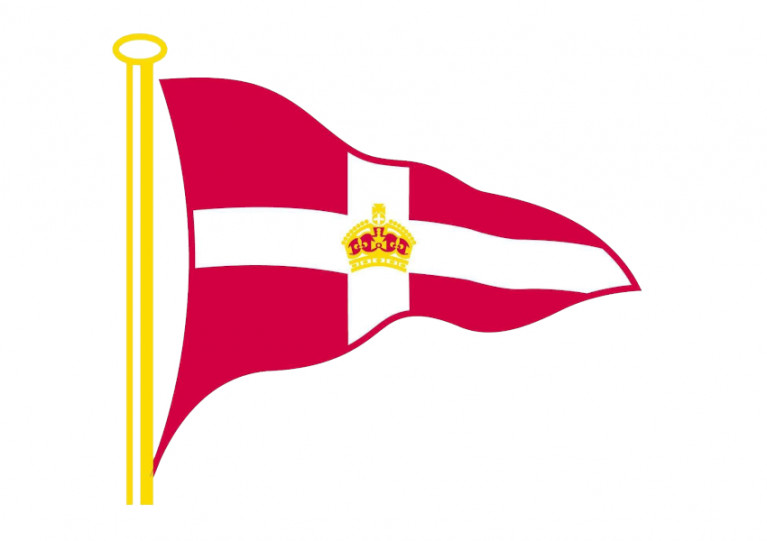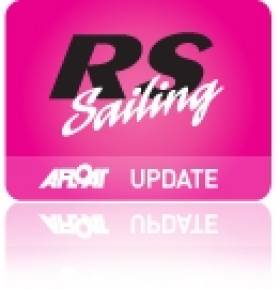Displaying items by tag: RSGYC
Over 120 junior and youth sailors along with their parents gathered at the Royal St George for the annual prize giving. It was the first time since the covid years that the dinner and awards ceremony had been run and there was an electric buzz in the air with many junior sailors having their first experience of a big club dinner.
Robbie Walker Junior Organiser opened the evening with a huge thank you to all the club volunteers, instructors, coaches, parents and staff that helped to run exceptional events this year, including the Elmo Cup, the Optimists National, the ILCA Nationals. Special thanks went to Kate Fogarty (Rear Commodore Sailing) and the other flags for their super support of youth sailing. To avoid a long-drawn-out prize giving, a set of prizes was awarded before and after each course.
Summer course success
First up were the Summer Course prizes. Start Sailing saw Michael Maher, William Naughton and Sarah Jane Healy scoop to the top awards with Basic Skills sailing awards going to Rebecca Murdock, Hugh O’ Flaherty and Ava Molly. Improving Skills winner were Oisin Healy, Jackson Clarke and Holly Cantwell with the final category of Advanced sailing awards going to Finn Byrne, Max O’Hare and Kate Molloy.
 Best Girl Basic Skills L-R Megan Foley, Ava Molloy, Jess Walsh at the Royal St. George Yacht Club Youth prizegiving
Best Girl Basic Skills L-R Megan Foley, Ava Molloy, Jess Walsh at the Royal St. George Yacht Club Youth prizegiving
The big winners
The Manna Cup was next presented to a team or person for the best asset to the club. The winners were ‘Team George’ who collectively represented the club at the Irish Sailing Junior Champions Cup competition recently held in Schull, where junior National champions all raced each other. 12 gold medals and the cup were awarded to the team which included the event Champion Fiachra Geraghty Mc Donnell. The George team placed:
- 1st Fiachra & Caoilinn Geraghty -McDonnell (ILCA6)
- 3rd Archie Daly & Michael Crosbie (Team Racing)
- 4th Trevor & Russell Bolger (Team Racing)
- 7th Patrick Foley & Seth Walker (RS Feva)
- 8th Lucia Cullen & Alana Twomey (RCYC) (29er)
- 11th Conor Cronin & William Walsh (NYC) (Optimist)
- 16th Georgia Goodbody (RIYC) & Emily Conan (Waszp)
The Clare McKenna Cup was awarded to the best club coach. Peter Fagan was the recipient recognising his great success and efforts in leading an Optimist training programme aimed at those looking to compete Internationally. 10 George sailors qualified for senior Optimist teams: Worlds - Caoilinn Geraghty McDonnell and Carolina Carra. Europeans – Patrick Foley, Thea Daly, Jules Start, Grace Gavin and Conor Cronin. IDT – Hannah Scott, Abigail Murphy and Juliette Ryan. Luan McKenna son of Clare McKenna a previous Junior Organiser presented the cup and shared some lovely words about his late mum.
 Peter Fagan presented with Clare McKenna Cup by Luan McKenna of the Royal St George Yacht Club
Peter Fagan presented with Clare McKenna Cup by Luan McKenna of the Royal St George Yacht Club
Rounding out the award of the major trophies were the Millennium Trophy for best club sailor at an International Optimist Event – Caoilinn Geraghty McDonnell (Oppie Worlds), the Cox Trophy for best international result went to 29er under 17 World Champions Lucia Cullen and Alana Twomey (RCYC) and the Reggie Lee Trophy for best international Laser performance went to Fiachra McDonnell (22nd Worlds in Texas)
The Incredible ILCAs
As the evening moved to the fleet prizes, the sugar and food were taking full effect in the junior audience, and the decibels were rising! The ILCA class led by class Captains Michael Ciborowski and Gus Legge awarded prizes to the best boy and girl in each rig size.
In the ILCA 6, best Boy was Fiachra McDonnell and best Girl – Sophie Kilmartin. ILCA 4’s had Best Boy – Daniel O’Connor and Best Girl – Ava Ennis, while in the ILCA 7 there were only male sailors and 1st was Kei Walker and 2nd Mark Henry. Spirit of ILCA was one of the most popular awards with huge cheers for both Zita Tempany, new to the fleet and showing great promise and Brian Carroll everyone’s favourite ILCA sailor.
All those who did ILCA Worlds were recognised with a medal:
ILCA 4 Worlds
1 = Ava Ennis – 93rd
2= Christian Ennis – 124th
3= Daniel O’Connor – 131st
4 = Krzysztof CIBOROWSKI – 192nd
5 = Seth Walker – 201st
6 = Max Cantwell – 228th
ILCA 6 worlds
1 = Fiachra McDonnell = 22nd
2 = Sophie Kilmartin – 29th
3 = Oisin Hughes – 81st
4 = Archie Daly – Bronze Europeans
5 – Brian Carroll – Emerald at Europeans
The Optimist Toptimists!
 Optimist racing at a Royal St George event on Dublin Bay Photo: Afloat
Optimist racing at a Royal St George event on Dublin Bay Photo: Afloat
The noisiest and most fun class was up next with the Optimists. Class Captains Brendan and Sarah Foley, supported by Gavan Murphy, Barry Murdock and Paul Molloy called out the following for prizes in what was an exceptional year for Optimist sailing in the club, which included the highlight of hosting the National Championships. Winners were:
- The Donagh Sisters for their performance at the Ulster's (1/2/3 in Junior Fleet).
- Emily Donagh for winning Nationals (Junior Main).
- Caoilinn Geraghty McDonnell for winning Female Senior Championship & qualifying for Gold Fleet at Worlds.
- Jules Start for winning Connaught's & Ulster's (Senior).
- Conor Cronin for winning Nationals Senior and champion of Ireland.
- Juliet for winning Connaught's, Munster's & Leinster’s (Junior)
- Max O'Hare (Best Attitude)
- Finn Foley (Most Improved - Junior)
- Marcus Shelley (Most Improved - Senior)
- Most improved Regatta Fleet sailors: Adam Anderson & Jessica Walsh
- Oliver Ryan, Amy Shelley & Louie Murphy for their performances in the Ulster's last month in Regatta racing fleet and dedication over the season.
The Fabulous Fevas
The RS Feva class is undergoing a revival with sailing in the class now happening all year and plenty of ex-Oppie sailors joining those already established in the boat. Coaches Henry Higgins and Henry Start have really upped the levels and great results are being seen. Under the support of Class Captain Keith Start – great plans are afoot for this very important double handed class. Winners on the night were;
- Best RSGYC boat in Nationals - 2nd place Patrick Foley and Seth Walker, who were also awarded the class nomination to the Junior Champions Cup.
- Best RSGYC boat in Regionals -2nd place at Easterns were Jules Start and Grace Gavin.
- The Spirit of Feva Award went to Amelie Hennessy and Molly McGlew.
- Persistence Award and winning Sept. Series went to Tom Boret and Lorcan Golden.
If she can see it, she can be it – 29er class
 Topping the podium in Spain - 29er skiff sailors Lucia Cullen (Royal St George YC) and Alana Twomey (Royal Cork YC)
Topping the podium in Spain - 29er skiff sailors Lucia Cullen (Royal St George YC) and Alana Twomey (Royal Cork YC)
The 29er fleet from the club was represented in spectacular style by some outstanding results from our female sailors. Demonstrating their talent on the international stage the female teams raced around Europe to come back with many prizes, including;
- Lucia Cullen and Alana Twomey (RCYC) - u19 Female World Champions
- Emily Conan – Performance in Youth Nationals, Nationals and achieving an ISAF invitation.
- Emily Riordan and Jessica Riordan - Notable performance for RSGYC team in 29er Worlds and Europeans.
Tremendous Team racers
 Action from the Elmo Cup team racing event at the Royal St. George Yacht Club
Action from the Elmo Cup team racing event at the Royal St. George Yacht Club
Finally, the team racers which are a huge part of the history and the culture of the Royal St George, were well represented by many youth teams that competed in the ELMO cup hosted by the club. This event saw over 120 sailors all under the age of 18 compete and socialise. An award was made to:
St Conleth’s team 2nd place in All Irelands – including RSGYC Members: Russell Bolger, Louis McGovern, Daniel O’Connor, Fergus O’Reilly, Richard Caldwell
A special prize for developing team racing was awarded to Max O’Hare and Jules Start.
At this stage of the ceremony, the ice creams had been served, and the sugars levels put paid to any further attention. The DJ kicked in and general fun was had by all.
Well done to all involved!
The Royal St George Youth Sailing Committee are;
- Robbie Walker - JO
- Keith Start - Feva Class Captain
- Michal Ciborowski & Gus Legge - ILCA Class Captains
- Brendan and Sarah Foley - Optimist Class Captains
- Gavan Murphy & Barry Murdock - Oppie Leaders
- Paul Molloy - Sea Squirts, Tigers and Lions
- Marc Little - Transition Year Programme
- David Bolger - 29er
Full list of all awards below:
Royal St George Yacht Club 2022 Junior Sailing Awards
Start Sailing 2022
Le Broquy Cup
1st - Michael Maher
2nd - Cian Dennison
3rd – Amy Russell
Best Boy Start Sailing 2022
1st = William Naughton
2nd = Rob Lovegrove
3rd = Alex Hoban
Best Girl Start Sailing 2022
1st = Sarah Jane Healy
2nd = Isabelle O’Reilly
3rd = Aleksandra M. Kurzawska
Basic Skills 2022
Toby Cup
1st = Rebecca Murdock
2nd = Senan Corcoran
3rd = Martin Gibney
Best Boy Basic Skills 2022
1st = Hugh O’Flaherty
2nd = Andrew Healy
3rd = Cian Farrell
Best Girl Basic Skills 2022
1st = Ava Molloy
2nd = Jessica Walsh
3rd = Megan Foley
Improving Skills 2022 - McCarthy Cup
1st = Oisin Healy
2nd = Juliet Bloomer
3rd = Anna Goggin
Best Boy Improving Skills 2022
1st = Jackson Clark
2nd = Jack O’Halloran
3rd = Jack Webb
Best Girl Improving Skills 2022
1st = Holly Cantwell
2nd = Amy O’Halloran
3rd = Juno Brownlee
Advanced Skills 2022 - Arthur Chadwick Cup
1st = Finn Byrne
2nd = Rachel Murdock
3rd = Susanna Bloomer
Best Boy Advanced Skills 2019
1st = Max O’Hare
2nd = Arthur Glavin
3rd = James Crawford
Best Girl Advanced Skills 2019
1st = Kate Molloy
2nd = Alanna Crawford
3rd = Molly O’Flaherty
Royal St George Yacht Club, 2022 Youth Performance Sailing Award
Further Awards 2022
Manna Cup – Best Asset to Junior Sailing (can be a team)
RSGYC “Irish Sailing Champions Cup” Squad
Fiachra and Caoilinn Geraghty -McDonnell - 1st
Archie Daly & Crew – 3rd
Trevor & Russell Bolger – 4th
Patrick Foley & Seth Walker – 7th
Lucia Cullen & Allana Twomey– 8th
Conor Cronin & Crew – 11th
Emily Conan & Georgia Goodbody – 16th
Junior Organisers Cup / Clare McKenna Cup - Best Intern or best team or JO Choice
Peter Fagan – performance coach of the year
Presented by Luan McKenna
Millennium Trophy - Best Optimist at Worlds or European
Caoilinn Geraghty -McDonnell
Cox Trophy - Best International racing result
Lucia Cullen (Royal St George YC) and Alana Twomey (Royal Cork YC) became the U17 World Champions in 29er fleet in Spain in August
Reggie Lee Trophy - Best Laser at European or Worlds
Fiachra Mcdonnell = 22nd at worlds in Texas
Fleet Captains Prizes 2022
ILCA 6
Best Boy - Fiachra Mcdonnell
Best Girl – Sophie Kilmartin
ILCA 4
Best Boy – Daniel O’Connor
Best Girl – Ava Ennis
ILCA 7
1st Kei Walker
2nd Mark Henry
Spirit of ILCA
Zita Tempany
Brian Carroll
Recognition to all world champs’ participants:
ILCA 4 Worlds
1 = Ava Ennis – 93rd
2= Christian Ennis – 124th
3= Daniel O’Connor – 131st
4 = Krzysztof CIBOROWSKI – 192nd
5 = Seth Walker – 201st
6 = Max Cantwell – 228th
ILCA 6 worlds
1 = Fiachra McDonnell = 22nd
2 = Sophie Kilmartin – 29th
3 = Oisin Hughes – 81st
4 = Archie Daly – Bronze Europeans
5 – Brian Carroll – Emerald at Europeans
OPTIMIST
The Donagh Sisters for their performance at the Ulster's (1/2/3 in Junior Fleet)
Emily Donagh for winning Nationals (Junior)
Caoilinn Geraghty McDonnell for winning Junior Champs & qualifying for Gold Fleet at Worlds
Jules Start for winning Connaught's & Ulster's (Senior),
Conor Cronin for winning Nat's (Senior),
Juliet Ryan for winning Connaught's, Munster's & Leinster’s (Junior), Max O'Hare (Best Attitude),
Finn Foley (Most Improved - Junior),
Marcus Shelley (Most Improved - Senior).
Most improved GODS sailors: Adam Anderson & Jessica Walsh.
Oliver Ryan & Amy Shelley & Louie Murphy for their performances in the Ulster's last month in Regatta racing fleet and dedication over the season.
FEVA
Best RSGYC boat in Nationals, overall #2nd place Seth Walker and Patrick Foley
Best RSGYC boat in Regionals/Easterns => overall #2nd place – Grace Gavin and Jules Start
Sprit of Feva Award and winning Silver fleet in the nationals – Molly McGlew and Amelie Hennessy
Persistence Award and winning Sept. Series Class – 1#st place - Tom Boret and Lorcan Golden
29ER
Lucia Cullen and Alana Twomey - u19 Female World Champions
Emily Riordan and Jessica Riordan - Notable performance for RSGYC team in 29er Worlds and Europeans
Emily Conan – Performance in Youth Nationals, Nationals and achieving an invitation to ISAF
TEAM RACING
St Conleth’s team 2nd place in All Irelands –
RSGYC Members:
Russell Bolger
Louis McGovern
Daniel O’Connor
Fergus O’Reilly
Richard Caldwell
Developing team racing
Max O’Hare
Jules Start
Celebrate St George’s Day At Home With The Royal St George
Due to the current Covid-19 restrictions in Ireland, the Royal St George Yacht Club will have a delayed — and decentralised —celebration of St George’s Day tomorrow, Friday 24 April.
All local members are invited join in from home with freshly made meals from the George in Dun Laoghaire to celebrate this important day for the club.
Members are also invited to send in a video or image featuring an interesting caption and your chosen freshly made meal to the RSGYC Facebook and Twitter pages using the hashtag #StGeorgesDayAtHome on your post.
Entries can be submitted up until next Monday 27 April, with winners announced at 5pm that evening.
Prizes include a freshly made meals voucher for four people, an RSGYC sailing jacket, an RSGYC polo shirt, and hand selected bottles of red and white wine.
Nominations Open For Royal St George’s Annual Sailing Awards
#RSGYC - Nominations are invited for the Royal St George Yacht Club’s Oscar Annual Sailing Awards to recognise RSGYC members for their sailing achievements in 2017.
All nominations are encouraged and will assist the Sailing Committee in recognising those RSGYC sailors and club members with significant achievements during the last year.
The following trophies and awards will be presented early next month:
- Commodore’s Cup (Best Offshore Performance)
- Vice-Commodore’s Cup (Significant Dinghy Performance)
- O’Hanlon Cup (Best Cruise of 2017)
- Enriquetta Cup (Significant Keelboat Performance)
- Causeway Trophy (Sportsmanship)
- Club Member of the Year
- Youth Trophy (Significant Contribution to the Club by a Youth Sailor)
If you have nominations for any of the above trophies or categories above, please take a moment to nominate the person, boat, or crew so that their sailing achievements can be recognised.
The awards will be presented on Saturday 3 February at one of the great evenings at the RSGYC, with sailors of all ages, their families and friends in attendance.
Nominations close next Friday 12 January and should be submitted online HERE.
Ongoing technical issues with the Volvo Dun Laoghaire Regatta website this week is giving sailors an extra opportunity to avail of a discounted early bird entry fee that was due to close today.
Organisers issued an apology via social media this morning adding two weeks to the entry deadline. VDLR say: 'Apologies for the chronic website problems this week - because of this we're EXTENDING the #EarlyBird entry deadline to 13th April'.
In the meantime, while the issues with the site are resolved, an entry list at March 20 is here. And the latest Dun Laoghaire Regatta news is on our dedicated section on Afloat.ie here
Dun Laoghaire Ready to Host Ireland’s Biggest Sailing Fixture
The 2017 Volvo Dun Laoghaire Regatta (VDLR) which is now established as the biggest sailing event in Ireland was launched this evening at the Maritime Museum in Dun Laoghaire. This biennial fixture which is organised by the four Dun Laoghaire waterfront yacht clubs (the Dun Laoghaire Motor Yacht Club (DMYC), the National Yacht Club (NYC), the Royal Irish Yacht Club (RIYC) and the Royal St George Yacht Club (RSGYC) will take place across four days in early July and attracts yachts from all four coasts of Ireland and from England, Scotland, Wales, Northern Ireland and the Isle of Man, and more locally from all the four Dun Laoghaire based yacht clubs.
Speaking at the launch event, David Lovegrove, President, Irish Sailing Association (ISA) said “The VDLR is now firmly established in Ireland’s major sporting calendar and is the biggest participant sporting event in the country, after the city marathons. We are also proud that the VDLR continues to grow and build upon Ireland's international reputation as a quality sports and sailing destination and cements Ireland's reputation as a location for a major international regatta. In addition, local area businesses will benefit considerably from the influx of visitors as they enjoy the superb sailing action in Dublin Bay and a fantastic array of family oriented activities that have been set up on shore.”
The key classes of yachts that will attract the most attention and competition during the Regatta will be the IRC Class 0, Class 1, Class 2, Class 3 and the IRC Offshore Class, who all, already have strong noteworthy entries. In addition, other ‘one design’ classes will include the Beneteau 31.7s, Beneteau 211, Sigma 33, Ruffian 23s, Dragon, RS Elite and the Shipman 28. The dinghy classes will include the GP14, Wayfarer, Squib, Mermaid, Flying Fifteen, Fireball, and single-handed Lasers and Moths.
Most notably this year there will be a Classics division in VDLR 2017 comprising a ‘Kingstown 200’ Anniversary Cup as part of the Dun Laoghaire Harbour Bicentenary Festival from July 6th to 9th 2017.
A monument on the Dún Laoghaire sea front commemorates the first stone of the eastern pier laid by his Excellency Charles Earl Whitworth Lord Lieutenant General and General Governor of Ireland on 31st May 1817, and the visit of King George IV in 1821 (Asylum Harbour of Dunleary was named Kingstown in 1821 and renamed Dun Laoghaire in 1920).
Also speaking at the launch event, Tim Goodbody, Chairman, VDLR 2017 said “The VDLR owes its prominence in European sailing events to a number of factors. One of the core attributes to attracting so many entrants is that it is one of the least expensive sailing events in Europe, thanks to generous sponsorship and support, so providing great value for money for all in the lovely waters of Dublin Bay” .
We also have more than 300 volunteers who give their time and energy to ensure the regatta runs smoothly, as well as the active cooperation of local area businesses and the Dun Laoghaire-Rathdown County Council. And of course the support from the thousands of visitors who come to watch the spectacle and take part in all the family oriented activities in and around Dun Laoghaire.”
“In addition the Regatta brings a significant amount to the local economy. Using the Irish tourism multiplier, the average expenditure per competitor will be €60 per day which for 2,500 competitors will be €150,000 per day and €600,000 for the four day event” added Tim Goodbody.
The VDLR is kindly supported by
• Volvo Car Ireland in partnership with Spirit Motor Group (Title sponsor)
• Dun Laoghaire Rathdown County Council
• Dun Laoghaire Harbour Company
• Failte Ireland
• Collen Construction – New Sponsor
• Helly Hansen
• Royal Marine Hotel
• Bretzel Bakery
• Dubarry
#whitesails – The Royal St. George Team, captained by Howard Knott aboard Calypso, retained the inter-club team trophy in the KPMG sponsored, Royal St. George White Sails and Non-Spinnaker Team Challenge event sailed in the Club's home waters over the weekend.
Teams representing the Royal St. George, the Royal Irish and National Yacht Clubs fought it out over a series of three two and a half hour races in light but steady breezes, commencing with one 'round the cans' on Friday evening, then linking with the Royal Alfred Yacht Club Bloomsday Regatta, for Saturday's race (RAYC results here) where, with 18 boats, the White Sails and Non-Spinnaker fleet made up the largest class in the event. For that race, event Race Officer, Hal Bleakley set up a challenging course taking the fleet outside the perimeter of the course being used for the other fleets before heading out past the Muglins and into Killiney Bay to round the Shanganah Mark before returning for a West Pier finish.
On Sunday morning Martin Byrne set up his start line in the shadow of the Celebrity Silhouette Cruise Liner anchored off Dun Laoghaire. The course was similar to that on Saturday and Colin O'Brien of the George Team, in Spirit shot out in front and held his lead for the two hour race, fending off a late challenge from the Royal Irish YC Xerxes, to take line honours and secure the Trophy for the home team.
The 2016 running of the event will take place over the weekend 1st to 3rd. July, linked with the Royal St. George regatta.
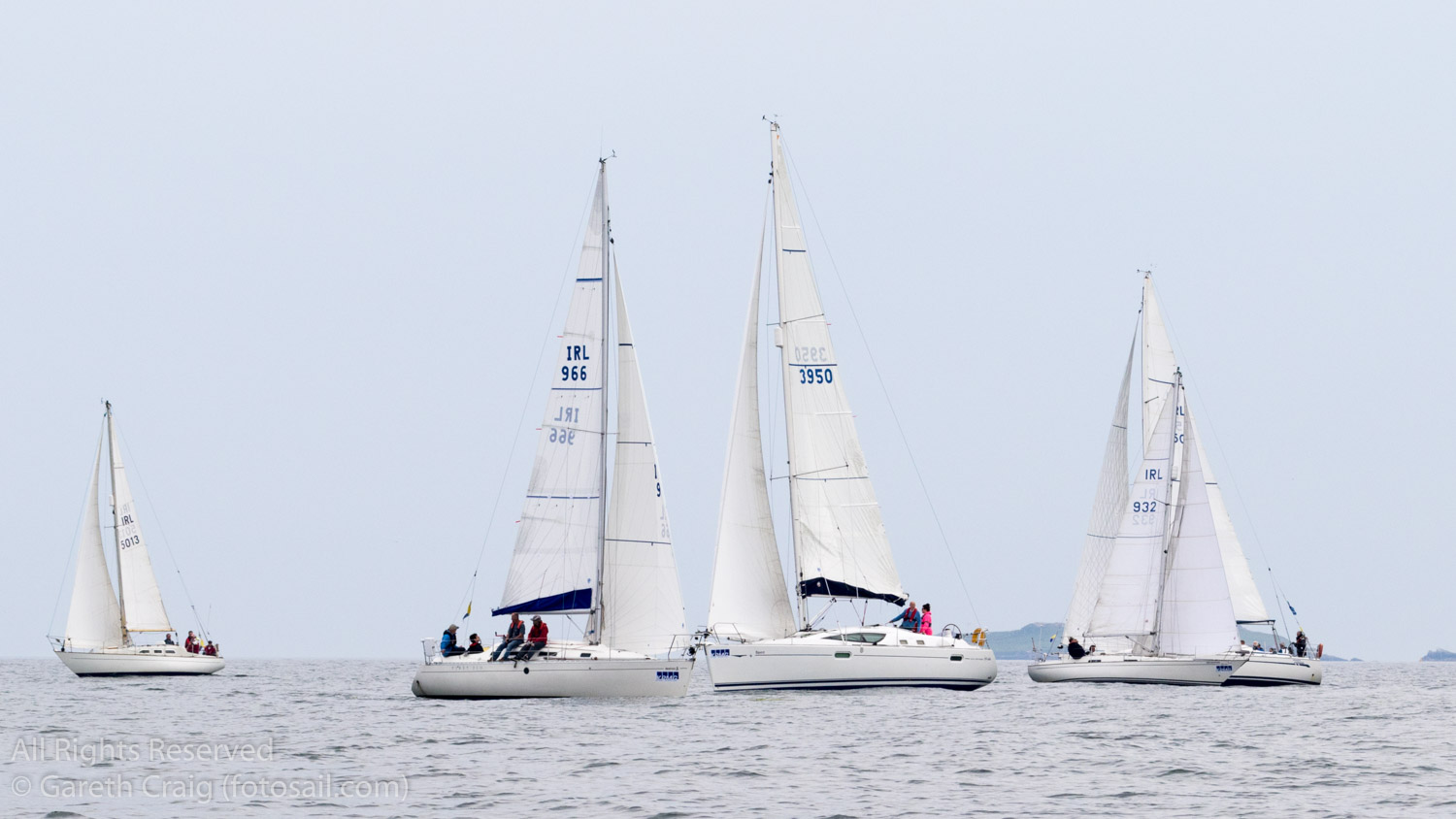


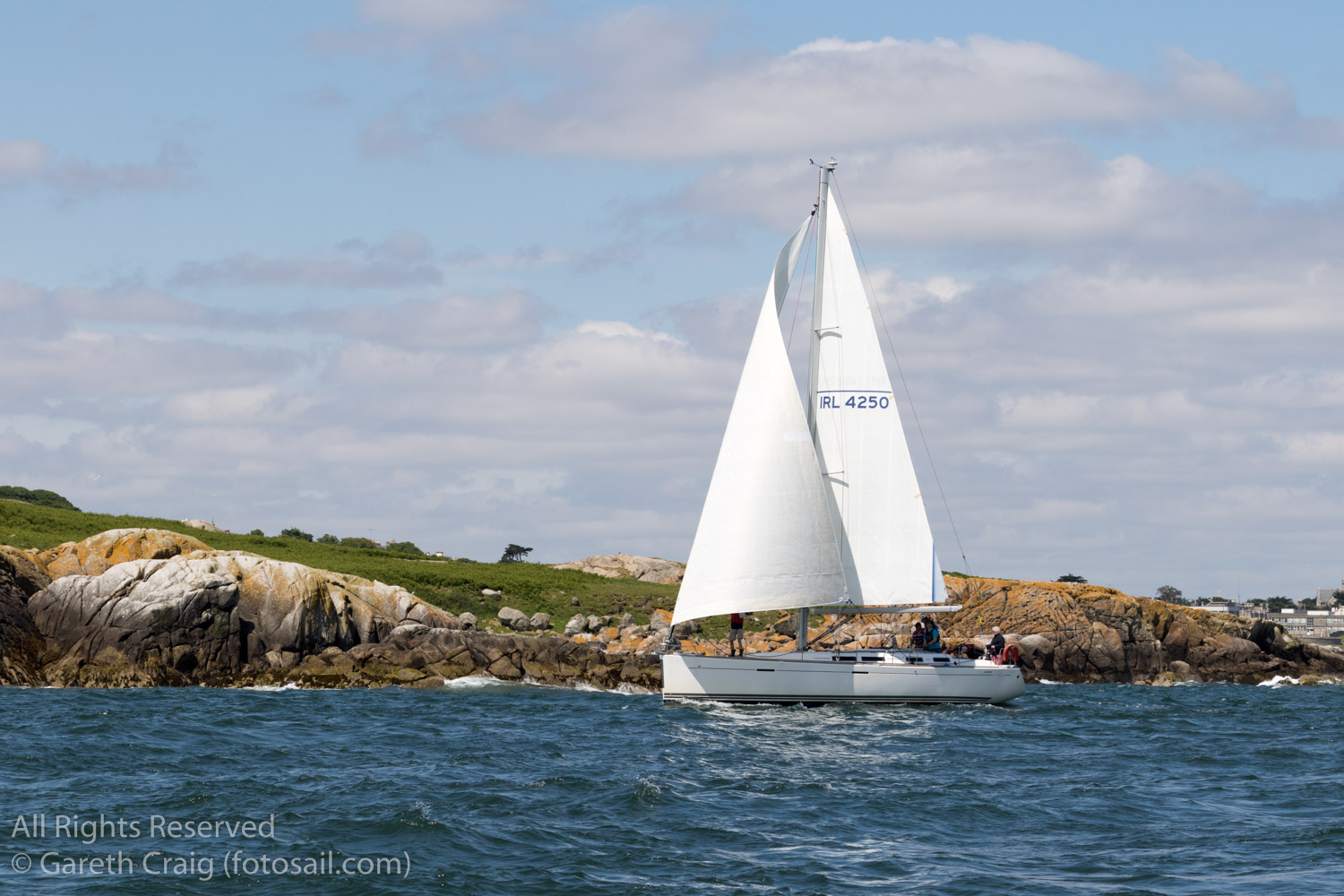
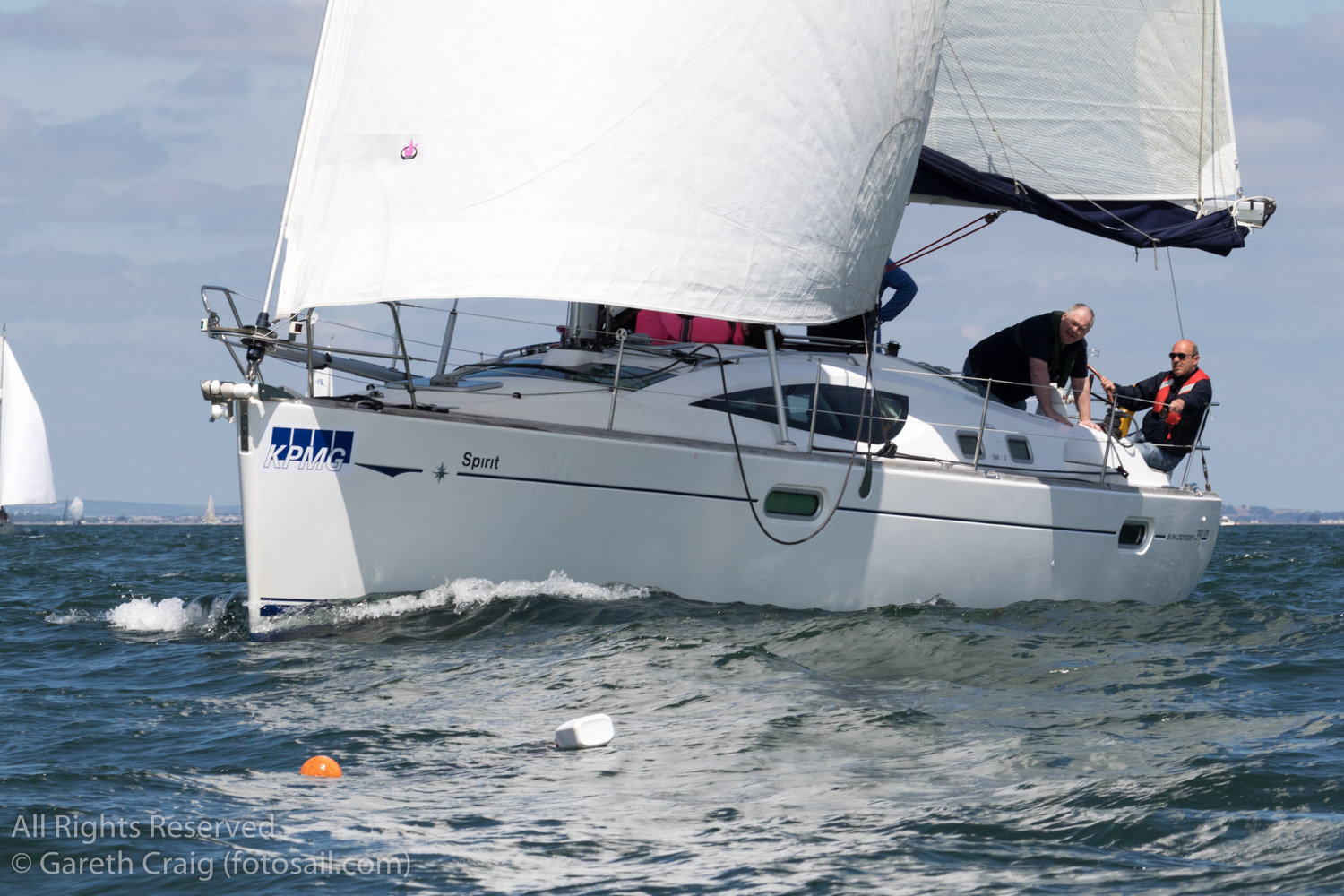

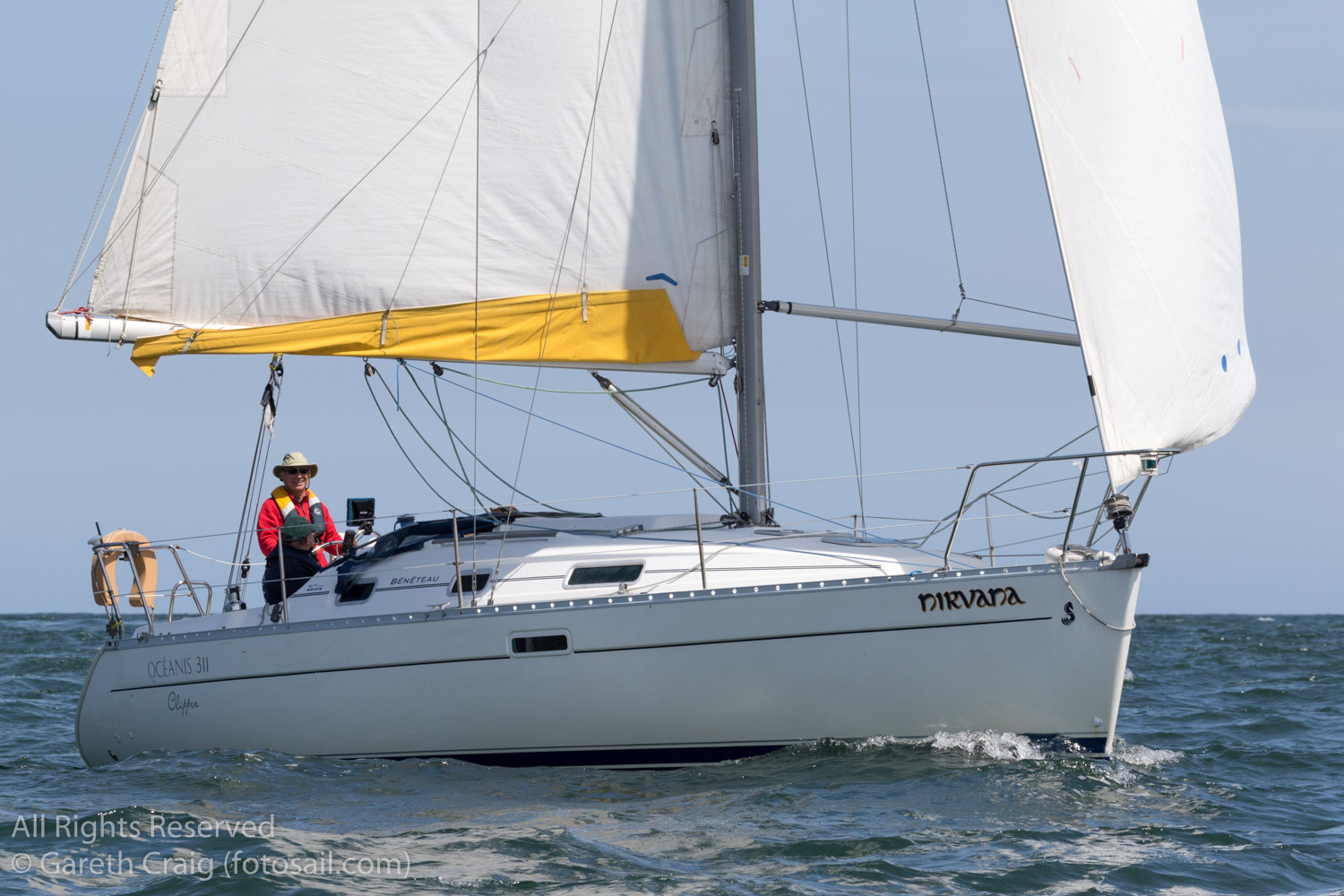
RStGYC RS & Laser Series, Best Turnout, Best Wind & Definitely Best Temperature So Far!
#rsgyc – Run by the RStGYC in Dun Laoghaire, Friday night racing for RSs and Lasers served up top notch sport in glorious conditions of sunshine and a warm westerly F 3-4 writes Heather King. Nine RSs came to the line followed by half a dozen Lasers, the latter somewhat depleted by Laser Northerns and Oppie Dad duty in Galway. Still, turnout keeps ticking up nicely.
The RSs had great tussles throughout the fleet and, unbelievably, the second races featured a dead heat for first in the 200s and a really tight photo finish for the win in the 400s. As the photos show, the Lasers were also really, really tight. In the "4s" Andrew Algeo and Paul Nolan took both races in a debut Friday cameo but Eoin Laverty in his brand new boat pushed him all the way in that second race, after leading at every mark. In the "2s" it was Stephen Craig and Conor Foley in race one, holding off SB20/GP14 veteran Mark Nolan while it was the youthful Jack Higgins and Chloe Eggers who crossed together with Craig/Foley in R2. Laser bullets were shared by Chris Arrowsmith and Ross O'Leary, with other podium showings by David Cahill, David Dwyer and Conor O'Leary. Conor enjoyed himself so much he wouldn't sail in and headed back up the Bay into the setting sun ! This PRO could hardly blame him as I looked on jealously.
Back onshore after ; Warm setting sun, BBQ with the Junior racers from the Harbour series, no rush home for work....you know the script !
Two thirds of the series still to go, we'll tag on a third race as we head towards mid-summers.
RS200/400 Demo at Royal St George Next Weekend
#RS SAILING - UK RS Association chairman Pete Vincent will be running another RS200 and 400 demo day from the Royal St George Yacht Club on the weekend of 24-25 March.
The well-known expert on RS boats is being brought to Dublin by RS400 owners Richard Tate and Emmet Ryan, who are "really keen to get an RS fleet up and running" in Dun Laoghaire.
"After the huge attention our boats have drawn both ashore and on the water, we feel there is already a keen interest from a broad cross section of sailors to learn something more about these incredible hiking dinghies," says Tate.
"There is a ready-to-race format for both RS200s and 400s to have a full season of racing every Tuesday and Thursday in Dublin Bay right from the go."
The RS200 is described as a "natural progression" from the RS Feva, while the RS400 "takes the concept one step further and way beyond". Both classes provide high performance assymmetrical racing for all age groups.
If you are thinking about moving into an RS200 or 400, this is the perfect opportunity to help you make your decision.
All demo sails must be booked in advance by contacting Pete Vincent directly at +44 7812 899 043 or [email protected].
The Royal St George Yacht Club has described the entertainment package for the upcoming International Match Racing Challenge as "value for money".
As reported Friday on Afloat.ie, the club is charging €200 for its 'hot seat' package, which will put yacht racing fans on board with a team "experiencing the thrills and tension of the race as it happens along with the competitors".
But the RSGYC has pointed out that the package, while expensive, works out as good value.
"We are very conscious of asking anyone to pay for anything but the package includes a lot - lunch, dinner, drinks, sailing, hot seat sailing, goodie bag, embroidered gear, etc," said RSGYC marketing and events co-ordinator Sonja Lee. "It is expensive but personally I feel it's value for money."
She added: "The feedback from last year’s hot seaters was excellent and quite a few are coming back this year. Nobody complained or felt it was bad value. Pricing is on a par with other 'corporate days'."
The 'hot seat package' includes a meet-and-greet in the clubhouse, a race briefing and a yacht trip around Dublin Bay as well as the hot seat race with a competing crew. Lunch and a post-race barbecue and drinks are also provided.
Meanwhile, the similarly specced 'pure spectator' package for €100 replaces the hot seat race with the chance to fire the starting gun for one of the weekend's races.
Further details are available on the RSGYC website.
Match Racing Challenge Hot Seat a Pricey Gift
You could be in the hot seat at next month's International Match Racing Challenge - provided you'e got €200 to spend.
The top-level entertainment package for the Royal St George Yacht Club's second annual event, set for the weekend of 23-24 July, will put yacht racing fans on board with a team "experiencing the thrills and tension of the race as it happens along with the competitors".
A spectator package - which will set fans back €100 - gives a bird's-eye view of all the racing in Scotsman's Bay "as well as the added bonus of firing the starting gun", according to the RSGYC.
The second International Match Race Challenge will see Ireland’s top six match racing teams go head to head against a world team consisting of six international crews from France, Germany, Australia, New Zealand and the UK. Ireland will be hoping to avenge their 36-29 loss to the world at last year's inaugural event.
Match racing involves head-to-head racing between two identical boats over short 20 minute courses, with each boat having four crew members. At the end of the competition and after approximately 90 races, there will be an overall individual winner. In addition, the combined scores of the six Irish teams and the six international teams will deliver an overall team winner.
Package One
THE HOT SEAT
€200 per person
Experience the thrills and tension of the race as it happens aboard!
12:00 Meet and Greet in Club
12:30 Race Briefing and Intro to the Event
12:45 Light Lunch
13:30 Trip on Yacht around Dublin Bay
14:30 Arrive at Spectator area to watch racing
15:00 Hot Seat Race
16:15 Return to shore
16:30 BBQ and Drinks
Hot Seaters need to be prepared to get wet and be active!
Package Two
PURE SPECTATOR
€100 per person
Get a Bird's Eye view of all the action!
12:00 Meet and Greet in Club
12:30 Race Briefing and Intro to the Event
12:45 Light Lunch
13:30 Trip on Yacht around Dublin Bay
14:30 Arrive at Spectator area to watch racing
15:00 Step on Board the Starter's Boat and fire the Starting Gun
16:00 Return to shore
16:30 BBQ and Drinks


























